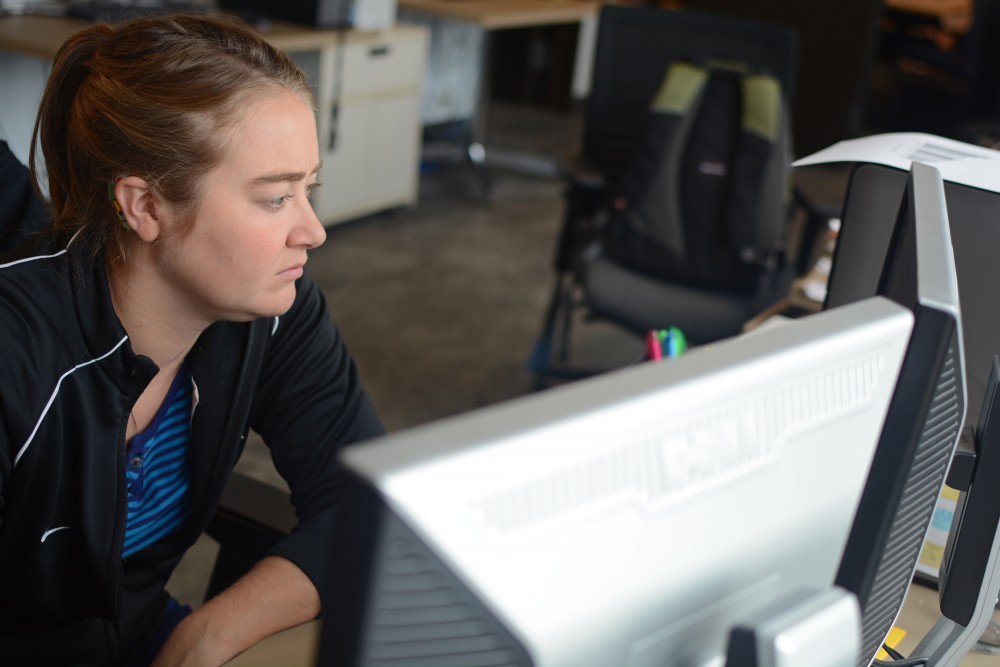As she woke one morning in her early twenties, Erin O’Neill found she’d lost hearing in her right ear. Six months later, she awoke unable to hear at all.
Though she originally planned to be a Spanish interpreter, O’Neill now studies cognitive brain sciences, helping psychology Professor Andrew Oxenham research ways to improve pitch and acoustics in cochlear implants.
Their research, which they plan to publish next month, is one of many projects at the University’s Center for Applied and Translational Sensory Science, which opened last fall. Despite research to advance hearing technology, the deaf community is still divided on the use of cochlear implants and other hearing aids.
O’Neill — who is a University of Minnesota PhD student — has had two cochlear implants in the last two years to stimulate her hearing. Doctors still don’t know what took her hearing.
“Before that, I actually had really good hearing,” she said. “My mom used to make fun of me and say I had elephant ears because I’d eavesdrop all the time. “
In its latest experiment, Oxenham’s team explored problems with implants, like detecting pitch and picking up certain words in speech.

Oxenham said they measured cochlear implant user’s sound perception by reciting sentences with high and low frequency words like “bit” and “bet.”
Meanwhile, their studies of pitch were conducted on implant users as well as people with normal hearing, in order to track how many electrodes implants need and how close they should be to neurons in the brain.
The cochlear implant sends electric signals to stimulate the auditory nerve, which then are sent to the brain.
Oxenham said the implants have proved extremely successful, but still need serious work. “The current technology is never going to be good enough for pitch.”
He said groups in Switzerland, Germany and Australia are also working to solve this problem.
One possible solution could be to regrow hairs on the inner ear and repair neurons, but Oxenham said that development could be up to 10 years away.

Despite research advances, the deaf and hard-of-hearing communities often don’t agree on cochlear implant use. Some fear that new technology could give people the option of hearing, which could prove detrimental to deaf culture — a problem that especially impacts deaf children of deaf parents.
Dann Trainer, University of Minnesota Disability Resource Center Access Consultant, said he opted for the implant in 2000 after he completely lost his hearing overnight.
Trainer, 70, said he used a standard hearing aid since he was 3 years old, but when he was in his fifties, he noticed a ringing in his ear before losing hearing altogether.
Trainor said the implant was a step up from his old hearing aids — letting him distinguish individual instruments and voices in music for the first time.
He said the controversy among deaf and hard-of-hearing communities is marked when parents choose the surgery for their child, instead letting them decide on their own.
“[The implant] is the cure, but not the cure,” Trainer said.
Michael Smith, a lab participant for the University’s Psychology department — and a cochlear implant user — said the improvements Oxenham’s team has devised are more important than reducing the size of hearing aids, which some companies have focused on.
“I’m very proud of the University of Minnesota,” Smith said. “This kind of research is a miracle.”
Oxenham said they will submit their research to the Association for Research in Otolaryngology — whose journal covers hearing and throat research — within the next month.
















